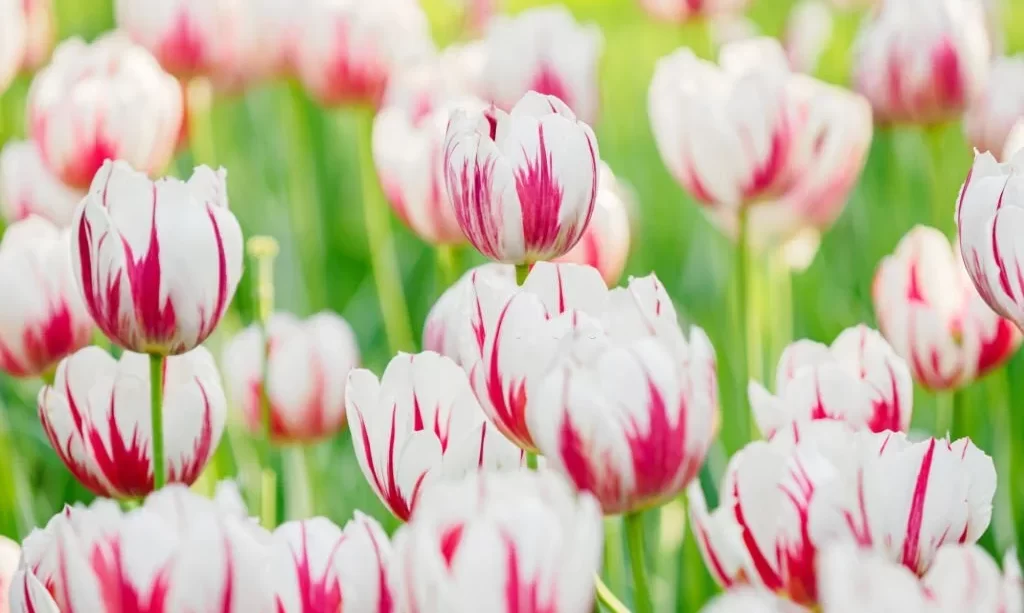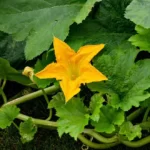Tulips, with their captivating colors and elegant shapes, are heralds of spring, gracing gardens with vibrant blooms that captivate the heart. When these beauties burst into flower, they fill our outdoor spaces with a symphony of colors, painting the landscape in hues of red, pink, yellow, and beyond. Yet, as with all things, the spectacle of tulip blooms eventually fades. However, this doesn’t mark the end of the story but rather the beginning of a new chapter in the life of these beloved bulbs.
In this article, we embark on the journey that follows the bloom, exploring the steps to take after tulips have graced us with their dazzling display. While the petals may fall and the initial burst of color wane, there’s still much to be done to ensure the health and vitality of tulip bulbs for seasons to come. From the art of deadheading to nourishing the bulbs and planning for future growth, let’s dive into the world of post-blooming care for tulips and celebrate the enduring beauty they bring to our gardens.
- 100% organic and natural hand crafted blend
- Includes a target pH of 6.5
- Available in a 4 pound size
- 100 percent natural and organic
- Bigger, more abundant blooms naturally
Deadheading and Fading Blooms
As the final notes of the tulip’s springtime symphony play, it’s time to address the fading blooms:
- The Art of Deadheading: Deadheading is the practice of removing spent tulip blooms, a task that not only tidies up the garden but also encourages the bulb’s future growth. By snipping or gently pinching off the faded flowers, you redirect the plant’s energy away from seed production and back into the bulb. This energy can then be used for the bulb’s growth and development, ensuring a healthy return of blooms in the next season.
- Benefits of Deadheading: Deadheading provides several benefits beyond the aesthetic improvement of removing withered petals. It helps prevent the tulip from expending energy on producing seeds, which can weaken the bulb. Additionally, it reduces the risk of disease and pest infestations that can target decaying flowers.
- Proper Deadheading Technique: To deadhead tulips effectively, use clean and sharp garden shears or scissors. Snip off the faded flower heads just below the base of the bloom. Be careful not to damage the emerging foliage or nearby stems. Deadheading can be performed as soon as the petals start to wilt, but it’s essential to do it before seed pods form.
By mastering the art of deadheading, you not only maintain the visual appeal of your garden but also set the stage for a healthy and vibrant return of tulip blooms in the seasons to come. As we explore further, we’ll discover more ways to nurture and care for these resilient bulbs after their initial spring flourish.
- MAKE PRUNING WORK EASIER: Rust-resistant stainless steel blade are sharp and durable for easy and smooth cut.Anti-slip and ergonomic handle make the gardener clippers more comfortable in your hand.Easy-open spring action reduces hand fatigue while cutting. you can easily to cut without damaging the vital stems and branches of your plants.
- User-FRIENDLY SAFETY LOCK:These garden shears have locking mechanisms to keep the sharp blades securely closed when not in use.It is easy to maneuver and can effectively reduce accidental injuries.
- GARDEN GLOVES: This Gardening gloves,made of soft & comfortable cotton fabric,can protect yourself from dirt, skin wounds and nasty splinters when doing yard chores. The grip latex coating provides anti-slip or sure control when grabbing garden & yard tools.
- COMFORTABLE HANDLE: The handle part of the pruning shears made by high-purity PP+TPR plastic, especially the hand grip is very comfortable, but also has strong toughness and strength.
- PACKING LISTING: The packing include pruning shear, fruits shear, flower cutter, leaves trimmer, one pair glove, one organizer bag.Those pruning shears could satisfy need of planting, harvesting, floral, indoor and outdoor planting, greenhouse pruning.
Allowing the Foliage to Wilt Naturally
While the petals may have faded, the tulip’s foliage plays a crucial role in its post-blooming phase:
- Photosynthesis and Energy Storage: Tulip foliage continues to photosynthesize after the blooms have withered. This process allows the plant to capture sunlight and convert it into energy, which is stored in the bulb. Allowing the foliage to naturally wilt and turn yellow ensures that this energy is transferred back to the bulb for future growth and flowering.
- Resist the Urge to Cut Back Early: Although it may be tempting to trim or remove the wilting foliage for a tidier garden appearance, doing so prematurely can deprive the bulb of the energy it needs. Wait until the foliage has fully yellowed and wilted before gently cutting it back. This usually occurs several weeks after the blooms have faded.
- Managing the Appearance: To maintain the garden’s visual appeal while the foliage wilts naturally, consider planting companion plants or intermingling other spring and summer bloomers among your tulips. This way, you can divert attention away from the wilting tulip leaves and maintain an attractive garden space.
Fertilizing and Nourishing the Bulbs
After the tulip blooms have graced your garden, it’s essential to provide the bulbs with the nutrients they need for future growth:
- Balanced Bulb Fertilizer: Select a balanced, slow-release bulb fertilizer to replenish essential nutrients in the soil. These fertilizers are formulated specifically to support bulb development and flowering. Follow the manufacturer’s instructions for application rates and timing.
- When to Fertilize: Ideally, apply fertilizer shortly after flowering when the tulip foliage is still green and actively photosynthesizing. This timing allows the bulb to absorb nutrients and store them for the next growing season.
- Even Distribution: Sprinkle the fertilizer evenly around the garden bed where the tulips are planted. Avoid direct contact between the fertilizer and the bulbs to prevent potential damage.
- Package contains 4 pounds organic bulb fertilizer grains and is produced to avoid wasteful runoff, mess, hazards and smells
- Plant fertilizer is formulated with a 3-5-4 NPK to provide bulb plants the nutrients they need to create abundant blooms vibrant leaves
- Jobe’s organic fertilizer contains no synthetic chemicals and are OMRI listed for organic gardening by the USDA
- Application is simple and should be done every 3-5 weeks or as needed during the blooming season
- Jobe’s organic fertilizer is easily measured to provide the right amount of nutrients for bulb flowers and plants without risk of over fertilizing
Considering Tulip Relocation or Companion Planting
After the tulips have finished their spring display, you can explore different options for enhancing your garden:
- Tulip Relocation: If you wish to rearrange your garden’s layout or experiment with different color schemes, consider relocating your tulip bulbs. Carefully dig them up, taking care not to damage the bulbs, and replant them in their new desired location in late summer or early fall.
- Companion Planting: Companion planting involves pairing tulips with other plants that complement their colors and growth habits. Choose companion plants that bloom after the tulips, ensuring a seamless transition of color and beauty in your garden.
- Naturalization: Some gardeners choose to allow tulips to naturalize, which means leaving the bulbs in place to multiply and return year after year. This can create stunning displays of blooms as the years pass. To encourage naturalization, avoid cutting back foliage until it has yellowed completely.
By following these steps and considering your options for tulip relocation or companion planting, you can extend the beauty and impact of your garden beyond the springtime tulip bloom, creating a vibrant and dynamic outdoor space to enjoy throughout the seasons.
Leaving the Bulbs in Place for Naturalization
For those who wish to embrace the art of letting nature take its course, leaving tulip bulbs in place for naturalization is a wonderful option:
- Embracing Naturalization: Naturalization involves allowing tulip bulbs to remain in the ground, where they can multiply and return year after year. This process results in larger displays of blooms with each passing season, transforming your garden into a tapestry of colors.
- Avoiding Premature Cutting: To encourage naturalization, it’s essential not to cut back tulip foliage until it has turned completely yellow. During this period, the plant is still absorbing energy from the sun and transferring it to the bulb. Once the foliage has naturally wilted and yellowed, it’s safe to trim it back.
- Managing the Appearance: While you await the naturalization process, consider planting low-growing, spring-blooming ground covers or other perennials that can camouflage the fading tulip foliage. This strategic planting maintains the garden’s visual appeal as the tulip leaves gradually wither away.
Preparing for Future Seasons
As you bid farewell to the current tulip season, it’s time to prepare for the ones that lie ahead:
- Soil Preparation: Evaluate the condition of your garden soil and amend it if necessary. Ensure it provides good drainage, as waterlogged soil can harm tulip bulbs. Adding organic matter like compost can improve both drainage and nutrient retention.
- Bulb Storage: If you’ve decided to lift and relocate tulip bulbs, store them properly until it’s time for replanting. Keep bulbs in a cool, dry place, and consider placing them in breathable bags or containers to prevent mold and moisture buildup.
- Pest and Disease Management: Be vigilant for signs of pests or diseases that may affect your tulips. Address any issues promptly to protect the bulbs and ensure a healthy bloom in the future.
- Planning Varieties: Plan for future tulip displays by selecting a variety of tulips with staggered bloom times. This strategic planting ensures a more extended period of colorful blossoms in your garden.
- Protects against over- and under-watering
- Feeds up to 6 months
- Grows plants twice as big (vs. unfed plants)
- Absorbs up to 33 percent more water than basic potting soil (vs. potting soil that does not contain sphagnum peat moss, coir and wetting agent)
- Helps beautify potted flowers, indoors and out
Conclusion
As the final petals of your tulips gracefully fall, you’re embarking on a journey of ongoing beauty and renewal in your garden. Whether you choose to deadhead spent blooms, allow foliage to wilt naturally, or embrace the magic of naturalization, the post-blooming phase of tulips is filled with possibilities.
By following these steps and preparing for the seasons to come, you’re not merely nurturing tulips; you’re nurturing the timeless joy that these blossoms bring to your garden. Each year, as the tulips reemerge with their colorful splendor, you’ll be reminded of the cycle of life and the enduring beauty of nature.
In your garden, the story of tulips is one of transformation, resilience, and the anticipation of future blooms. So, as you bid adieu to this year’s tulips, remember that their legacy lives on, and with each passing season, your garden’s beauty continues to evolve, just like the colorful petals of these beloved springtime treasures.







